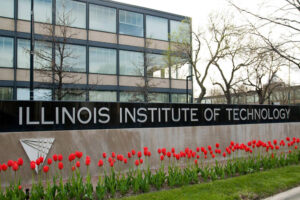In recent years, the realm of education has been undergoing a transformative shift, driven by the rapid advancements in technology. One such change that’s garnering both attention and debate is the transition from traditional, brick-and-mortar computer labs to cloud-based desktop solutions on college campuses. In this article, we’ll take a closer look at the reasons behind this shift, its potential benefits, and the considerations that come into play.
The Evolution of Learning Spaces
As institutions of higher education navigate the digital age, the concept of learning spaces has evolved beyond the confines of physical classrooms and computer labs. The emergence of cloud computing has presented a unique opportunity for colleges to rethink their approach to providing technological resources to students. Cloud desktops, which offer virtualized computing environments accessible from any device with an internet connection, have garnered attention as a promising alternative to the traditional computer lab setup.
Reasons Driving the Transition
Several factors contribute to the growing interest in migrating from physical computer labs to cloud desktops:
- Accessibility: Cloud desktops break down geographical barriers, allowing students to access their personalized desktop environments remotely. This accessibility is particularly beneficial for students who may have commitments outside of campus or face challenges commuting.
- Cost Efficiency: Maintaining and updating physical computer labs can be resource-intensive. Cloud desktop solutions offer the potential for cost savings, as they eliminate the need for ongoing hardware maintenance and upgrades.
- Scalability: Cloud solutions offer scalability that physical labs struggle to match. Institutions can easily scale up or down based on demand without the need for significant infrastructure investments.
- Flexibility: Cloud desktops provide students with the flexibility to work on assignments and projects at their convenience, promoting a more self-directed learning approach.
We find all of these reasons and more in the 2023 Students and Technology Report: Flexibility, Choice, and Equity in the Student Experience from EDUCAUSE.
Understanding the TCO of On prem Computer Labs
Potential Benefits and Considerations
The shift from physical labs to cloud desktops presents both potential benefits and considerations for colleges:
Benefits:
- Enhanced Accessibility: Students can access their desktop environments from various devices, fostering a more personalized learning experience.
- Resource Optimization: Colleges can reallocate resources previously dedicated to maintaining physical labs to other educational initiatives.
- Disaster Recovery: Cloud solutions often include robust backup and recovery mechanisms, safeguarding students’ work against unexpected events.
Considerations
- Internet Dependence: Cloud desktops rely on stable internet connections. Campuses must ensure reliable connectivity to prevent disruptions in learning.
- Data Security: As data is stored remotely, data security and privacy become paramount. Institutions must implement robust security measures to protect students’ sensitive information.
- Learning Curve: Adapting to a new system may involve a learning curve for both students and faculty. Adequate training and support should be provided during the transition.
A Balanced Approach
The transition from physical computer labs to cloud desktops is not a one-size-fits-all solution. Colleges must evaluate their unique needs, infrastructure, and student demographics before making the switch. Some institutions might find that a hybrid approach, combining both physical labs and cloud desktops, best suits their requirements.
In Conclusion
The shift from physical computer labs to cloud desktops is a testament to the evolving landscape of education. While this transition offers promising benefits in terms of accessibility, cost efficiency, and flexibility, it also presents challenges related to connectivity and security. A balanced approach that carefully considers the institution’s needs and the preferences of its student body will be key to successfully navigating this digital transformation.
As technology continues to shape the educational experience, colleges must remain adaptable, responsive, and open to embracing new paradigms that ultimately enhance the learning journey for all.
What Makes Apporto Different?
Apporto offers a range of pricing plans, including options for educational institutions, businesses, and individuals. It is also easy to set up and use, with no special technical skills required. It is as simple as Wifi, Browser, Done. Schedule a demo today!
Happy Computing!








